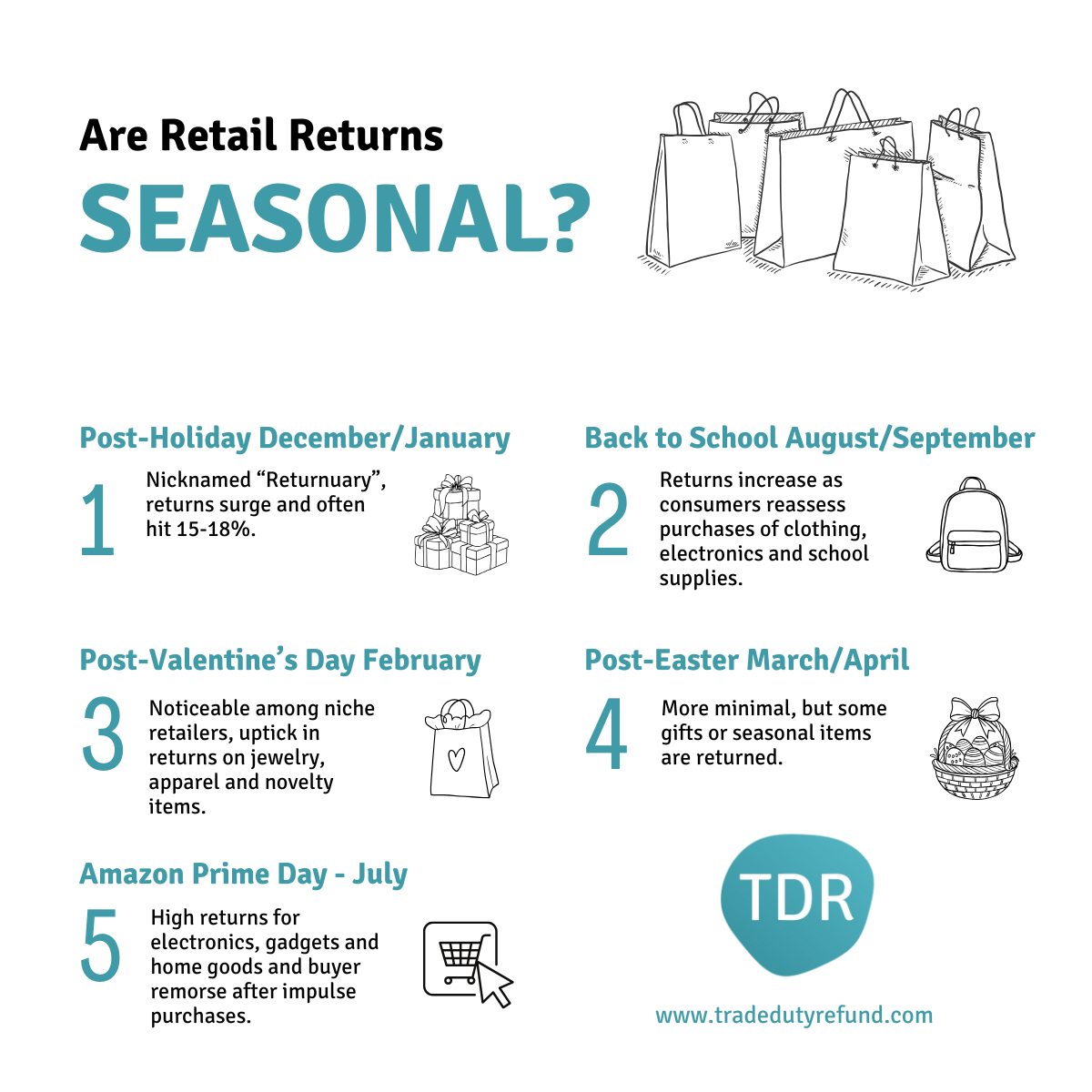Seasonal Fluctuations in Retail Returns: Key Insights for Cross-Border Retailers

Seasonal fluctuations significantly impact retail returns, with average return rates surging during peak holiday periods. Understanding these trends is crucial for cross-border retailers seeking to optimize their operations and manage duty refunds effectively.
Retail returns are a critical aspect of the e-commerce landscape, and market data indicates that these returns are heavily influenced by seasonal factors. With an average return rate of 16.9%, this figure tends to spike during specific holiday seasons and other key periods throughout the year. For cross-border retailers, managing these returns efficiently is essential for maintaining profitability and customer satisfaction.
Top 5 Peak Return Periods
- Post-Holiday (December/January)
- Nicknamed “Returnuary,” this period sees a significant surge in returns, often reaching 15-18%. The influx of holiday gifts and impulse purchases contributes to this spike.
- Back to School (August/September)
- Returns increase as consumers reassess their purchases of clothing, electronics, and school supplies during the back-to-school season.
- Post-Valentine’s Day (February)
- Noticeable among niche retailers, there is an uptick in returns for jewelry, apparel, and novelty items following Valentine’s Day.
- Post-Easter (March/April)
- Although more minimal, some gifts or seasonal items are returned after Easter as consumers reevaluate their purchases.
- Amazon Prime Day (July)
- High returns for electronics, gadgets, and home goods are common after impulse purchases during Amazon Prime Day. Buyer remorse often sets in after the event.
Optimizing Duty Refunds for Cross-Border Retailers
For cross-border retailers, managing returns is not just about logistics; it’s also about optimizing duty refunds. Trade Duty Refund is a dedicated customs broker that specializes in helping companies reclaim duties paid on returned items. This service is invaluable for global retailers looking to streamline their operations and maximize their duty drawback.
Understanding how to calculate duty drawback and implementing efficient duty refund solutions can significantly enhance international trade efficiency. By partnering with e-commerce experts and leveraging AI-powered logistics, retailers can navigate the complexities of customs regulations and supply chain management more effectively.
Conclusion
Seasonal fluctuations in retail returns present both challenges and opportunities for cross-border retailers. By staying informed about these trends and utilizing specialized services like Trade Duty Refund, retailers can optimize their duty refund processes, improve customer satisfaction, and enhance their overall operational efficiency.
For more insights on duty refunds, customs duty drawback, and international duty reclaim, consult with Trade Duty Refund. Our expertise in duty refunds and duty drawback can help you navigate the complexities of cross-border trade and ensure a seamless return process for your customers.

